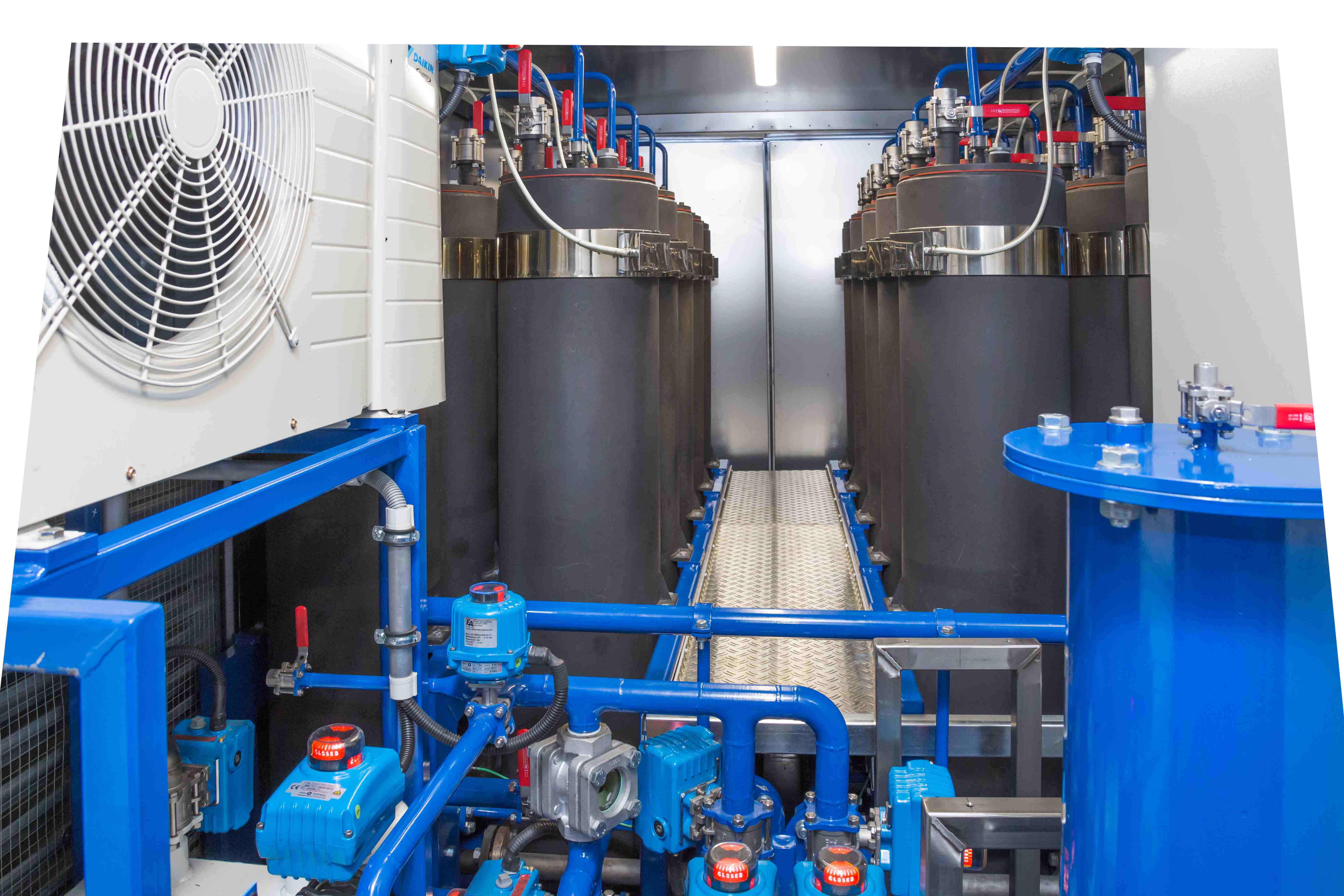How Regenerated Transformer Oil Prolongs Transformer Life-span
The function of transformer oil is critical in ensuring the dependability and long life of transformers, serving as both an insulator and coolant. Regenerated transformer oil provides an engaging solution to improve these features by effectively eliminating dangerous pollutants that jeopardize performance. Via a careful regrowth procedure, the oil's dielectric properties and thermal stability can be recovered, resulting in substantial renovations in functional effectiveness. Comprehending the intricacies of this process and its wider implications for transformer upkeep discloses a pathway to not only expand life-span however also enhance prices in power administration systems.
Significance of Transformer Oil
Transformer oil plays a critical duty in the reliable operation of electric transformers. It primarily offers as an insulating medium, protecting against electrical discharges and making sure that components run safely under high voltage conditions. The oil's dielectric properties are essential to maintaining the honesty of the transformer, as they minimize the threat of failures that could lead to costly downtimes or devastating incidents.
Along with its insulating capacities, transformer oil additionally operates as a coolant. As transformers run, they create warmth that should be dissipated to avoid getting too hot and subsequent damages. The oil flows within the transformer, transferring and taking in warm far from crucial elements, consequently keeping optimal operating temperatures.
In addition, transformer oil serves as an obstacle versus moisture and contaminants, which can endanger the performance and longevity of the transformer. Its chemical buildings assist in counteracting acids and various other by-products that might develop with time, adding to the total health of the electric system.
Advantages of Regenerated Oil

Furthermore, regenerated transformer oil has a reduced degree of impurities, consisting of bits and contaminants that can weaken efficiency. This pureness not only improves the oil's thermal conductivity yet likewise extends the functional lifespan of transformers by minimizing overheating risks. The improved thermal security of regrowed oil guarantees regular efficiency also under high operating temperatures, which is crucial for preserving transformer performance.
Another benefit is its environmental influence. Restored oil promotes sustainability by reducing waste and the demand for brand-new oil manufacturing, thus reducing the carbon footprint related to transformer upkeep. Transformer Oil Regeneration. The long life of regrowed oil translates to reduced maintenance expenses over time, as less oil modifications and less constant devices downtime are called for.
Refine of Oil Regeneration
The regeneration of transformer oil involves a methodical process made to recover the oil's original properties and improve its efficiency. This procedure image source typically starts with the elimination helpful resources of the made use of oil from the transformer, which is after that subjected to various filtration strategies.
The primary step in the regeneration procedure is the purification, where solid contaminants such as steel, sludge, and dirt bits are gotten rid of. This is often adhered to by vacuum cleaner purification, which assists to remove dampness and unstable substances, therefore boosting the oil's dielectric toughness.

Influence On Transformer Efficiency
Restoring the residential or commercial properties of regenerated transformer oil dramatically influences the overall performance of transformers. Enhanced dielectric toughness is among the most crucial advantages, as it enables for better insulation and decreases the likelihood of electric failure. This enhancement results in a much more secure operation under high voltage conditions, inevitably resulting in raised effectiveness.
Additionally, the elimination of impurities and deterioration products during the regeneration procedure decreases the threat of overheating. Cleaner oil assists in better warm dissipation, which is vital for preserving optimum operating temperature levels. Therefore, the thermal efficiency of the transformer is improved, enabling greater loads without endangering integrity.
Furthermore, the chemical security of restored oil makes sure long term operational life. It stands up to oxidation and destruction, minimizing the frequency of upkeep interventions and oil replacement. This security not only adds to enhanced look at this now performance yet also aligns with sustainability goals by decreasing waste.
Future of Transformer Upkeep
As developments in technology remain to improve the landscape of electric design, the future of transformer upkeep is poised for considerable transformation. The assimilation of clever modern technologies, such as IoT sensing units and anticipating analytics, allows real-time monitoring of transformer wellness, improving the ability to preemptively resolve concerns before they intensify into significant failures. This aggressive technique not just takes full advantage of functional performance however additionally expands the life-span of transformers.
Additionally, the application of man-made intelligence (AI) in data analysis enables for more precise fault detection and medical diagnosis. By leveraging artificial intelligence algorithms, upkeep groups can determine patterns in operational data that human experts may neglect, bring about even more educated decision-making.
In addition, the adoption of environment-friendly practices, consisting of the use of regenerated transformer oil, is established to redefine upkeep protocols. This sustainable technique not only reduces ecological influence however additionally enhances the general wellness of the transformer.
Finally, the change towards automation in maintenance procedures is anticipated to simplify operations, decrease downtime, and reduced costs. As these developments continue to evolve, the future of transformer maintenance will undoubtedly come to be much more efficient, trustworthy, and lasting, making certain the honesty of essential electrical framework.
Conclusion
The application of regenerated transformer oil significantly improves the operational longevity of transformers. Eventually, the adoption of regenerated oil stands for an essential development in transformer maintenance, making certain optimal efficiency and sustainability in the administration of electric infrastructure.
The function of transformer oil is crucial in ensuring the integrity and longevity of transformers, offering as both an insulator and coolant.Transformer oil plays a crucial role in the efficient procedure of electrical transformers. Restored oil promotes sustainability by lowering waste and the need for new oil production, thereby decreasing the carbon impact associated with transformer maintenance.Bring back the residential or commercial properties of regenerated transformer oil significantly influences the general performance of transformers.The utilization of regenerated transformer oil dramatically boosts the operational durability of transformers.